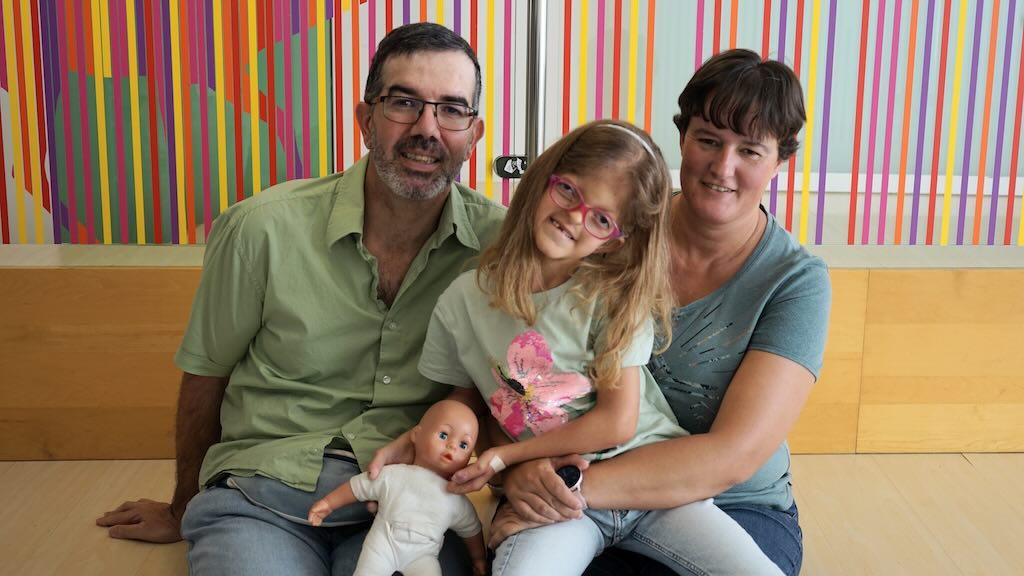‘Knowing what disease our daughter has puts us at ease because now we know there are people with the disease who have reached adulthood’

The Genetics Department at the SJD Barcelona Children's Hospital has taken part in an international research study, allowing them to put a name to Laia’s genetic disease.
Laia’s parents knew that ‘something was going on’ with their daughter before she was born. In one of the first ultrasounds done at four months of pregnancy, medical professionals noticed a lack of finger movement on one of Laia’s hands, and that her feet were not clearly defined.
They decided to perform amniocentesis and were able to rule out any genetic diseases or chromosomal anomalies that can be detected with this test. ‘They said that our daughter simply had a physical problem, so we decided to continue the pregnancy despite still being within the timeframe to legally terminate’, recounts Laia’s father, Xavier.
Laia was born in April 2019, five years ago now, at a clinic in Girona. Her parents decided to bring her to the SJD Barcelona Children's Hospital when she was only a few months old to get a diagnosis and start treatment for the girl's syndactyly. Staff treating the girl conducted several types of tests to determine the origin of her disease, as well as checking whether any other organs were affected, and both the girl and her parents underwent various genetic screening tests.
Reaching a diagnosis was not easy. ‘Over the years, doctors have been ruling out one disease after another’, explains Xavier. ‘At first, they thought she had CAP (Craniosynostosis - anal anomalies - porokeratosis syndrome), but that was later ruled out because she didn't have all of those symptoms.’
As well as Laia—the only girl with this disease in Spain—other known cases include a 10-year-old boy, a 14-year-old girl, and two young adults, aged 18 and 27.
The problem is that Laia’s disease simply had not been described before. Three years ago, doctor Dídac Casas, as well as Antonio Martínez Monseny and Judith Armstrong from the Genetics Department, and also in collaboration with Dr Carolina Prat from the Dermatology Department, were able to put a name to the disease at last. All thanks to an interdisciplinary effort with a group of American researchers.
Staff at the SJD Genetics Department, who are involved with several international research platforms, contacted investigators at the Baylor College of Medicine (Houston) as they were conducting a trial involving the MAP3K20 gene. Laia had a mutation in precisely this gene.
Thanks to the joint effort of these two teams, another five patients with this mutation were found with the same symptoms as Laia, including, to some degree or another, skin abnormalities, craniosynostosis (premature fusion of the cranial sutures), hearing loss and hand and foot deformities.
As well as Laia—the only girl with this disease in Spain—other known cases include a 10-year-old boy, a 14-year-old girl, and two young adults, aged 18 and 27. The discovery of this disease was recently published in the Human Genetics journal.
For Laia's parents, while knowing what disease their daughter has does not change her situation or the treatment she receives, it has put them at ease. ‘Now we know there is a young woman with the disease who is 27 years old. We’ve also been told it's not a neurodegenerative disease. Knowing that has put us more at ease. Before, we would be more concerned about what the future holds, about whether this disease could kill our daughter’, reflects Xavier.



